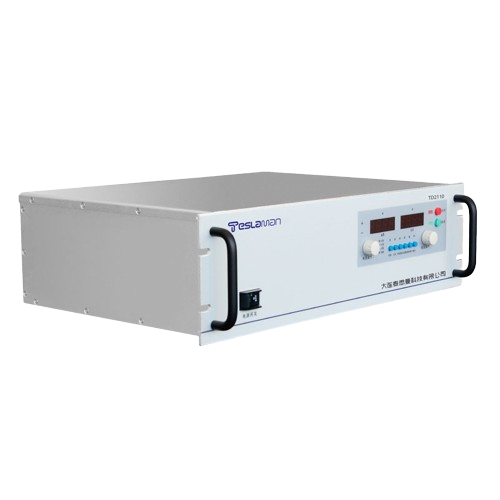Application and Innovation of High-Voltage Power Supplies in Scientific Experiments
As one of the core equipment in the field of scientific experiments, the performance and technological innovation of high-voltage power supplies play a crucial role in advancing cutting-edge scientific research. These devices provide energy support and environmental simulation conditions for various precision scientific experiments by generating stable high-voltage outputs, and are widely used in interdisciplinary fields such as physics, chemistry, and biomedicine. They have become key elements in promoting breakthroughs in basic scientific research and applied technologies.
1. Typical Applications of High-Voltage Power Supplies in Basic Scientific Experiments
In physics research, high-voltage power supplies serve as core components of large scientific facilities such as particle accelerators and nuclear fusion devices. For example, in particle collision experiments, high-voltage power supplies accelerate and control the trajectories of charged particles through gradient electric fields, enabling scientists to simulate the micro-scenarios of cosmic ray impacts and explore the interaction mechanisms of fundamental particles. In materials science, the electrospinning technology supported by high-voltage power supplies can prepare nanoscale fiber materials. By adjusting voltage parameters to control fiber diameter and morphology, it provides key process conditions for the research and development of new composite materials and biomedical scaffolds.
In the field of chemical experiments, high-voltage power supplies play important roles in electrolysis, electrocatalysis, and other research. High-voltage environments can significantly increase the ion migration rate in electrolyte solutions and accelerate electrochemical reaction processes. For instance, in new energy battery research, in-situ electrochemical testing systems based on high-voltage power supplies can real-time monitor the structural evolution of electrode materials under high-voltage conditions, providing data support for improving battery energy density and cycle stability. Additionally, the application of high-voltage pulse power supplies in environmental chemistry can achieve efficient degradation of organic pollutants in wastewater by generating strongly oxidizing free radicals to break down pollutant molecular structures, offering new pathways for the innovation of water treatment technologies.
2. Technological Innovations Expanding Application Scenarios
With the deepening of scientific research, the limitations of traditional high-voltage power supplies have gradually emerged, and new technological innovations are continuously expanding their application boundaries. Modular design has become an important direction for current technological development. By decomposing power supply systems into independent functional modules, it enables flexible adjustment of voltage output ranges and multi-channel collaborative control. This design concept not only enhances the adaptability of equipment but also facilitates rapid reconstruction of system topologies during experiments to meet the parameter requirements of different experimental stages. For example, in biomedical imaging experiments, modular high-voltage power supplies can simultaneously provide independently adjustable voltage excitations for multiple electrode arrays, enabling three-dimensional precise mapping of the electrical properties of biological tissues.
The introduction of intelligent control technologies has further enhanced the experimental application efficiency of high-voltage power supplies. Closed-loop control systems based on sensor networks and algorithm models can real-time monitor power supply output parameters and experimental environmental variables, ensuring voltage stability through adaptive adjustments. For example, in experiments under extreme environments (such as high temperature, high humidity, or strong magnetic fields), intelligent high-voltage power supplies can automatically compensate for parameter fluctuations caused by environmental interference to ensure the reliability of experimental data. Furthermore, fault prediction and health management technologies combined with machine learning algorithms can identify potential defects in power supply systems in advance, reducing the risk of experimental interruptions and improving research efficiency.
3. Future Development Trends and Challenges
Facing the cutting-edge needs of future scientific experiments, high-voltage power supply technology is developing towards high power density and low-noise output. In nuclear fusion research, next-generation high-voltage power supplies must meet the dual requirements of megawatt-level power output and nanosecond-level pulse precision to support key experiments in plasma confinement and heating. Meanwhile, green energy-saving technologies have become a focus of industry attention. The application of new topological structures and wide-bandgap semiconductor devices can increase power supply efficiency to over 95%, significantly reducing the energy consumption costs of large experimental facilities.
However, technological innovation also faces numerous challenges. Issues such as insulation material aging and electromagnetic compatibility design in high-voltage environments still need to be addressed. For example, during long-term experiments, the degradation of insulating media may lead to voltage leakage or equipment failure, affecting experimental safety. Additionally, interdisciplinary experiments place higher demands on the compatibility of high-voltage power supplies. How to achieve synchronous control and data interaction with other precision instruments has become a key difficulty in technological integration.
In conclusion, the application of high-voltage power supplies in scientific experiments has always been deeply coupled with technological innovation. From basic research to applied development, improvements in their performance have not only promoted the progress of individual disciplines but also played a bridging role in cross-disciplinary research. With the continuous iteration of new materials and technologies, high-voltage power supplies will unleash greater potential in future scientific explorations, providing a more powerful driving force for humanity to understand the world and solve global challenges.




















